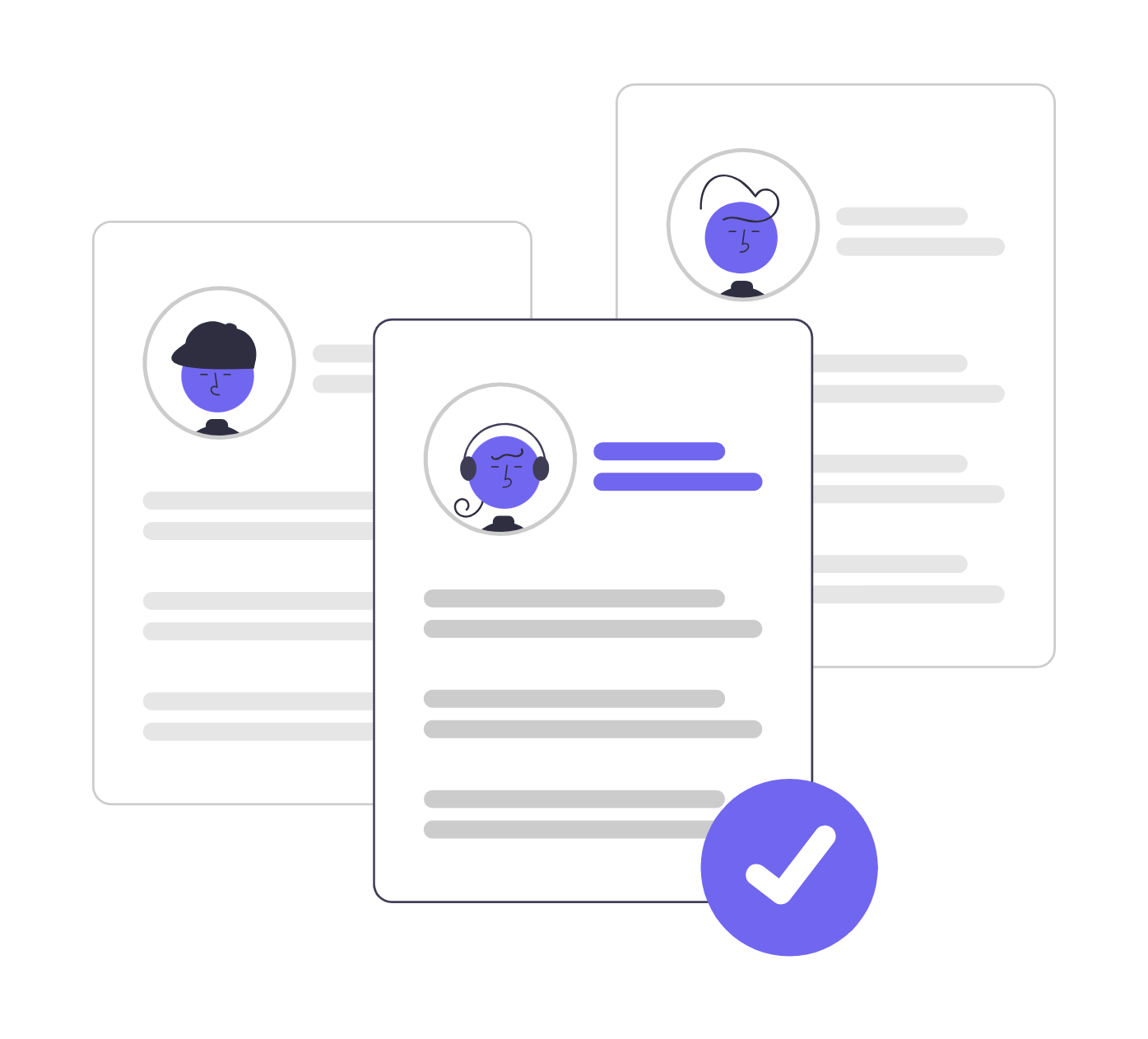Share
In recruiting, it’s easy to treat every job seeker the same. Someone applies, you skim their résumé, maybe you schedule an interview—no harm done, right? But here’s the reality: treating every applicant as a candidate is a common mistake that can quietly sabotage your hiring process.
It leads to wasted time, poor hiring decisions, and misleading recruiting data. And in a competitive job market where every second counts, those mistakes compound fast.
In this post, we’re breaking down the real difference between applicants and candidates, why that distinction matters more than ever, and how understanding it can streamline your hiring process and improve the quality of every hire.
What’s the Real Difference Between an Applicant and a Candidate?
Let’s start with the basics:
- Applicant: Anyone who submits a job application—qualified or not.
- Candidate: A job seeker who has been screened and is actively being considered for a specific role.
Think of it this way: all candidates are applicants, but not all applicants are candidates. The transition happens only after a vetting process—once it’s clear the person could be a good fit for the role.
Some definitions also include:
- Potential candidates: Individuals who haven’t applied yet but are part of your talent ecosystem—those who follow your company, engage on LinkedIn, or are sourced by recruiters. They’re not applicants, but they may be highly valuable future hires.
Understanding these distinctions isn’t just semantics—it’s strategy.
Why Treating All Applicants as Candidates Slows You Down
According to industry insights, most job openings receive dozens, if not hundreds, of applications. But how many of those applicants are truly viable? A small fraction.
If you consider every application as worthy of the same attention, here’s what happens:
- Your team spends hours reviewing résumés that don’t meet the minimum qualifications.
- You burn out your hiring managers, who feel overwhelmed by volume rather than empowered by quality.
- You risk overlooking high-quality candidates buried in a pile of underqualified applicants.
As Luis Chaparro (Pipehire) puts it: “Only some applicants will become candidates.” The rest may have simply clicked “Apply Now” out of necessity or curiosity, not qualification or genuine interest.
WorkScreen helps eliminate low-effort applicants—including those who use AITools to apply, copy-paste answers, or rely on "one-click apply." This way, you focus only on genuine, committed, and high-quality candidates—helping you avoid costly hiring mistakes.

From Volume to Value: How Strong Recruiters Define Their Funnel
Hiring professionals who excel know that application is just the first touchpoint, not a validation of suitability.
Here’s a real-world example from a hiring manager on Quora:
“You may start with 100 applicants. Only 10 pass the initial screening and are interviewed. Two or three become actual candidates. Those are the people you rank and make offers to.”
This approach reflects a deeper understanding of the hiring funnel. It’s not just about attracting interest—it’s about qualifying that interest through structure and scrutiny.
The Data Gap: Why Confusing Applicants and Candidates Leads to Misguided Decisions
The difference between applicants and candidates isn’t just helpful for hiring—it’s essential for accurate recruiting analytics.
As Charlie S. from Datapeople explains:
“Applicants are tied to a specific requisition. Candidates are part of your broader talent pipeline.”
Why does that matter?
- If you’re analyzing performance across job ads, you can’t lump all applicants together—some jobs may be generating quality candidates, while others attract noise.
- If you’re measuring time-to-hire or source effectiveness, combining applicants and candidates will skew your data and cloud your insights.
To improve your recruiting strategy, you need to treat each group as its own data point. This lets you identify what’s working, what’s broken, and where to optimize your pipeline.
Workscreen evaluates, scores and ranks applicants on a performance-based leaderboard—making it easy to spot top talent, save time, and make smarter, data-driven hiring decisions.

How to Turn Applicants into Candidates: A Strategic Vetting Framework
To draw a clear line between applicants and candidates, you need a consistent screening process. Here’s a simple framework:
 Vetting Criteria to Look For
Vetting Criteria to Look For
- Meets baseline job requirements (education, experience, certifications)
- Has relevant skills for the role
- Shows thoughtful intent in the application (not a one-click submission)
- Passes a screening step (e.g., résumé review, skill test, phone screen)
- Demonstrates motivation and culture fit during early engagement
This process turns a passive applicant into an active candidate—someone worthy of deeper evaluation and potential investment.
The Candidate Experience Starts with Clarity
Separating applicants from candidates doesn’t just help your team—it helps job seekers too.
When you move unqualified applicants into interviews “just in case,” it:
- Frustrates hiring managers
- Wastes the candidate’s time
- Delays serious candidates from progressing
On the flip side, when you only move forward with well-vetted candidates, you provide a more respectful, efficient experience. That reflects well on your employer brand and sets the tone for a high-quality workplace.
And remember: candidate experience isn’t just about politeness. It’s about trust, speed, and intentionality.
Conclusion: Think Pipeline, Not Pile
It’s tempting to celebrate a high number of applicants—but volume is not a hiring metric that matters. What matters is who’s qualified, interested, and ready to contribute.
When you separate applicants from candidates:
- Your team spends less time on low-fit résumés.
- Your data becomes more accurate and actionable.
- Your process feels less chaotic and more strategic.
So here’s the challenge: stop viewing your hiring process as a pile of résumés and start seeing it as a pipeline of potential. Your next great hire is probably in there—but only if you know how to spot them.
Easily administer one-click skill tests with Workscreen-This way you can assess candidates based on real-world ability—not just credentials like résumés and past experience. This helps you hire more confidently and holistically.

FAQ
Because not every applicant meets the job requirements. Treating all applicants as candidates wastes time and resources. Clear distinctions help hiring teams prioritize top talent, improve pipeline efficiency, and avoid bad hires.
An applicant becomes a candidate after passing an initial vetting process—such as a résumé screen, skill test, or phone interview. Only then are they considered seriously for the role.
Yes. A sourced or referred individual can be considered a candidate if they’re being evaluated for a role, even if they haven’t submitted a formal application. These are sometimes called passive candidates.
It varies by role and screening criteria, but it’s common for only 10–20% of applicants to become candidates. The stronger your screening process, the better your candidate quality.
Start with clear job requirements, then use screening tools like skill assessments, scoring rubrics, and structured interviews to qualify applicants quickly and consistently.

